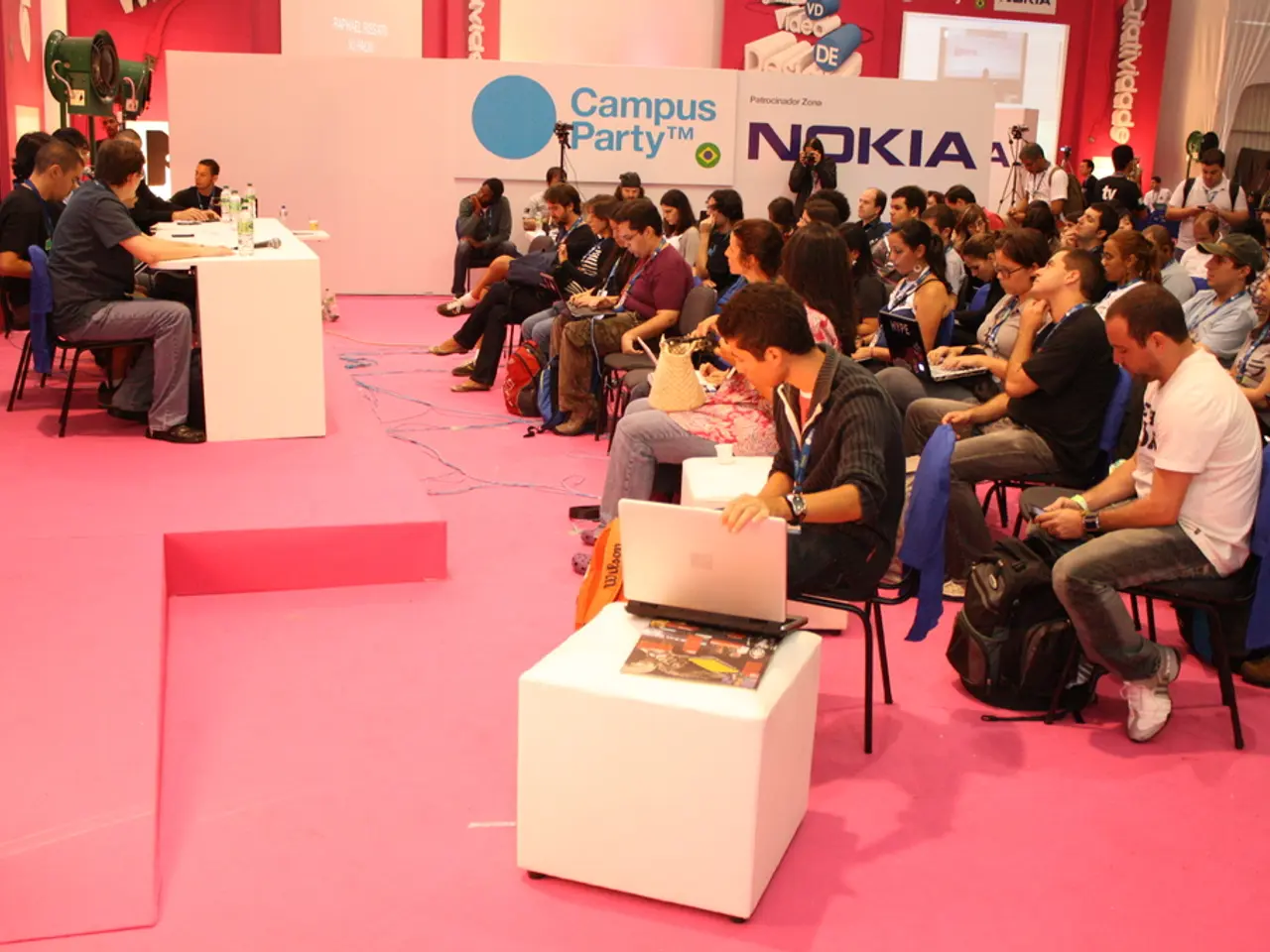Required equipment for web events: determining audio, visual, and lighting gear for social media presentations
In today's digital age, designing events for streaming has become a crucial aspect of extending an event's reach and maximising its impact. Here's a guide to effectively create high-quality, immersive live experiences by focusing on optimising lighting, sound, direction, and technology.
1. Lighting
A well-lit stage is key to creating strong visual effects in digital streams. Use multi-point lighting, including key light, fill light, and backlight, to ensure subjects are well-lit and visually separated from the background. Adjust lighting to avoid harsh shadows and glare, creating a clear and professional look for viewers. Incorporate colour temperature balance to maintain natural skin tones and consistent visuals. For dynamic events, use programmable LED lights to change moods or highlight moments during the stream.
2. Sound
Invest in high-quality microphones to capture clear audio. Depending on the setup, this could be lapel, shotgun, or condenser mics. Deploy audio mixing equipment to manage levels and reduce background noise for consistent sound quality. Use audio monitoring (headphones for operators) to catch issues live. Apply soundproofing or use controlled environments to minimise echo, reverb, or interference.
3. Direction
Plan camera angles and transitions carefully to keep visual interest and narrative clarity. Use a vision mixer/switcher to switch smoothly between cameras and media sources. Employ a dedicated director or technical director to cue shots, manage pacing, and ensure smooth operation. Incorporate live audience engagement tools like Q&A, polls, or chat interactions to maintain viewer interest.
4. Technology
Use low-latency streaming protocols like SRT or WebRTC to minimise delay and maintain near real-time interaction, especially for interactive or fast-paced content. Ensure scalability and fault tolerance in the streaming infrastructure to handle peak viewers without outage or lag. Optimise video by using adaptive bitrate streaming, which adjusts video quality based on viewer bandwidth for smooth playback across devices. Deploy a Content Delivery Network (CDN) to distribute streams efficiently worldwide and reduce buffering. Incorporate multi-platform streaming and tailored content for each platform's audience behaviour and strengths. Add accessibility features such as captions and screen-reader compatibility to reach diverse audiences. Use analytics-based scheduling to stream during times when your target audience is most active for better engagement.
Additional Best Practices
Rehearse extensively with the full technical setup to troubleshoot potential issues in lighting, sound, or connectivity. Use professional-grade cameras and lenses matched to your event size and budget for sharp and compelling visuals. Create exclusive or behind-the-scenes content to generate urgency and excitement. Consider innovative engagement tools like virtual reality segments or interactive digital elements to elevate the viewer experience.
By integrating professional lighting, clear sound, directed camera work, and robust streaming technology, you can deliver a live digital event that feels immersive, seamless, and engaging to a broad online audience. Careful planning and rehearsal ensure technical smoothness, while analytics and accessibility broaden reach and impact.
Additional tips include using uniform illumination and deliberately placed accents, effective image direction, hardware encoders or video mixers with SDI/HDMI inputs, and a tailored call to action at the end of a stream. Using multiple cameras allows for fluid cuts and different angles, including long shots, medium shots, and close-ups. Sound quality is essential for achieving a large digital audience, and clean voice transmission is ensured by professional miking with lavalier, headset, or gooseneck microphones. Close-ups and exciting perspectives are important for creating closeness despite the distance between the digital audience and the event.
- To elevate the overall viewing experience and maintain an immersive atmosphere, implement technology such as dynamic LED lights in your live streams, allowing you to change moods and highlight moments during the event.
- Enhance your lifestyle and entertainment offerings by incorporating technology into your streaming events, enabling you to provide high-quality, interactive, and accessible content to a wider audience, fostering a sense of connection and engagement.




